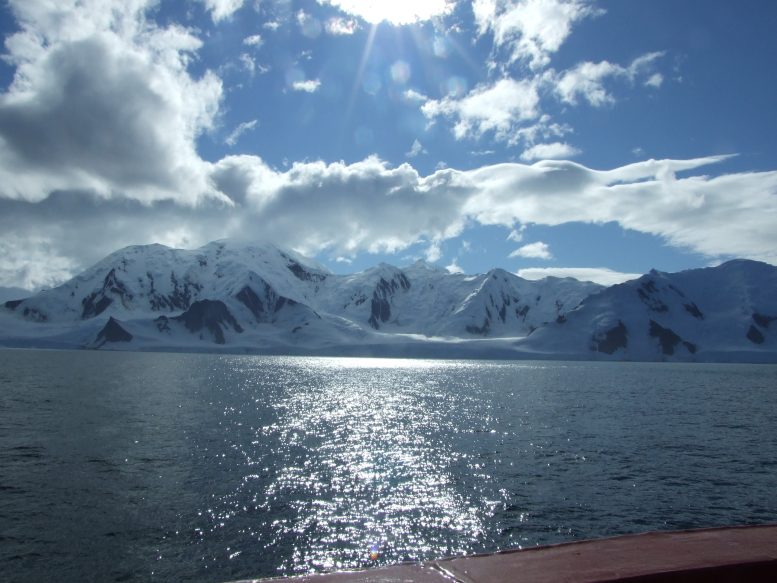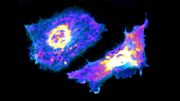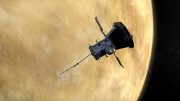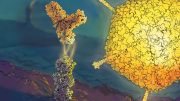
Research indicates that the growing areas of open water in Antarctica’s sea ice could enable the future establishment of coastal plants and animals, altering native ecosystems as the climate changes. Credit: Ceridwen Fraser
Research led by the University of Otago suggests that the expansion of open water areas within Antarctica’s sea ice, known as polynyas, could potentially enable coastal plants and animals to establish themselves on the continent in the future.
The research, published in the prestigious international journal Proceedings of the National Academy of Science, aimed at understanding where open water might allow coastal species to settle in the future.
Led by Research Fellow Dr Grant Duffy from Otago’s Department of Marine Science, the team found unexpected evidence the area of polynyas around Antarctica is increasing dramatically, and it follows an intriguing cycle, growing and shrinking roughly every 16 years.
“These trends are fascinating – and we haven’t noticed them before,” Dr Duffy says. “We’re not completely sure what is driving the cyclical pattern, but the ecological implications could be huge.”
Cyclical Patterns and Climate Phenomena
Co-author Dr Ariaan Purich, a scientist at Monash University in Australia who studies ocean-atmosphere interactions, says the cyclical patterns appear to line up with atmospheric drivers including the Southern Annular Mode, a climate phenomenon that circles Antarctica and influences weather in New Zealand and Australia.
“Recent record-low Antarctic sea ice coverage has been linked with ocean warming,” Dr. Purich says.
“In coastal environments, large-scale atmospheric variability and trends can interact with changing ocean conditions to shape the extent of sea ice. These findings give us exciting insights that will help us predict coastal sea ice coverage in the future.”
Implications for Coastal Ecosystems
The senior author on the study, Professor Ceridwen Fraser, also of the Department of Marine Science, says the results are also critically important for predicting what will happen to coastal ecosystems in Antarctica as the climate warms.
“We know that many non-native plants and animals can reach Antarctica, for example by rafting on floating kelp,” Professor Fraser says.
“At the moment, most of them can’t settle because of coastal ice scour. Less ice could create opportunities for some coastal plants and animals to establish – with big implications for native Antarctic coastal ecosystems.”
Dr Duffy agrees. “Our research shows that areas of open water along Antarctic coasts, in particular, are growing in area as the climate warms,” he says. “These changing coastal environments will mean ecosystems have to adapt and change.”
Reference: “Emerging long-term trends and interdecadal cycles in Antarctic polynyas” by Grant A. Duffy, Fabien Montiel, Ariaan Purich and Ceridwen I. Fraser, 4 March 2024, Proceedings of the National Academy of Sciences.
DOI: 10.1073/pnas.2321595121
The study was supported by the Marsden Fund of New Zealand, and researchers involved in the work are part of the major national Antarctic programs Securing Antarctica’s Environmental Future, Australia and Antarctic Science Platform, New Zealand.









A characteristic of life on Earth is that it is always trying to expand the geographic boundaries of where it exists. Yet, climate alarmists advocate preventing changing the climate to keep ecosystems static. Primarily with the concern over protecting expensive beach-front properties. Perhaps a goal should instead be making the climate optimal for all life forms. There will be some winners and some losers with change, but that is the way it has always been. In any event, it is unrealistic to think that humans can actually control the climate. If that were the case, we would have turned climate control into a weapon of war.
“… could enable the future establishment of coastal plants and animals, altering native ecosystems as the climate changes.”
Tell us more about these complex “native ecosystems” that are endangered by climate change. A non-existent ecosystem isn’t the same as an ecosystem. Typically, we are told how important diversity is in ecosystems, yet here the authors are expressing concern about the potential for increasing diversity. If biological diversity is good, why would anyone be against it?
The past climate (you know, the one we had before 1960) and before Anthropogenic Global Heating kicked in so thoroughly, was quite suitable for a vast diversity of life forms. Whilst increasing desertification, and increasing human warfare over such fundamentals as water, as the globe continues to grow hotter by a couple more degrees, a large number of ecosystems are going to change to the detriment of things (including we humans) that live there. This will reduce diversity for a while. No doubt in 10 million years time the Earth will have recovered from us and, even if somewhat more radioactive than at present, assorted diverse bugs and beasts will be flourishing once again. As for Antarctica; moss (a small ecosystem) has been growing for a very long while in the Ross Sea’s Dry Valleys region and no doubt there are enough bits of other stuff already brought in by humans, birds, and the dead seals that have crawled up assorted valleys to die to re-populate the coastal regions of Antarctica. The increase in size of the polynyas etc just allows things to flourish more easily, as you point out.